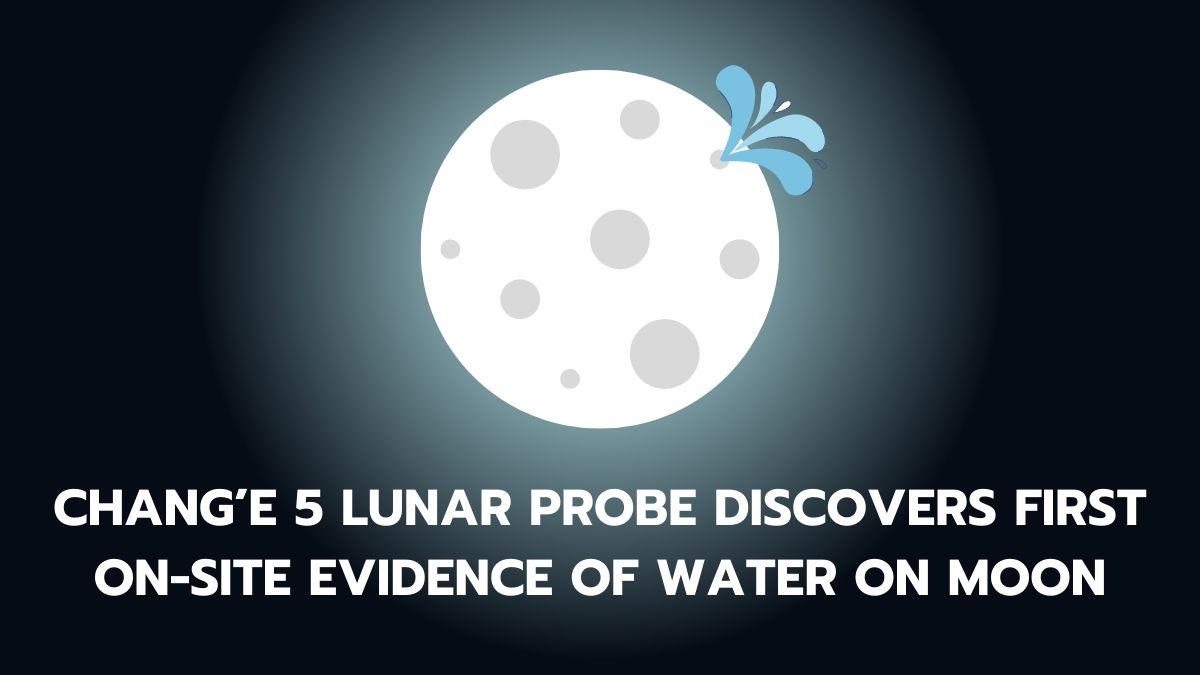The first-ever on-site evidence of water on the moon’s surface was discovered by China’s Chang’e 5 lunar lander, adding to the satellite’s dryness. The study, published on Saturday in the peer-reviewed journal Science Advances, showed that the lunar soil around the landing site had less than 120 grammes of water per tonne. Still, a light, vesicular rock has 180 ppm, significantly drier than that on Earth. Although distant observation had shown the presence of water, the lander has now detected water in rocks and dirt.
For the first time, a lunar lander technology evaluated the spectral reflectance of regolith and rock and discovered water on the spot. According to the researchers, the solar wind contributed the most to the humidity of lunar soil by bringing hydrogen, which builds up water. As a result, the rock is thought to have originated from an earlier, more humid basaltic block before being thrown onto the landing site and picked up by the lunar lander. The water content can be estimated since the water molecule or hydroxyl absorbs at a frequency of about three micrometers, the state-run Xinhua news agency reported, citing researchers from the Chinese Academy of Sciences (CAS).
According to the study, the moon grew drier over time, most likely owing to the degassing of its mantle reservoir. The Chang’e-5 spacecraft landed on one of the moon’s youngest mare basalts in a mid-high latitude. It weighed samples weighing 1,731 grammes and measured water on the spot.
Lin Honglei, a researcher with the Institute of Geology and Geophysics under CAS, told Xinhua that the returned samples are a mixture of granules both on the surface and beneath. “The returned samples are a mixture of granules both on the surface and beneath. But an in-situ probe can measure the outermost layer of the lunar surface,” he mentioned. Lin also said that to simulate authentic lunar surface conditions on Earth is challenging, thus making the in-situ measurement so essential.
The findings provide more clues to China’s Chang’e-6 and Chang’e-7 missions. The report stated that the investigations of lunar water reserves come into the limelight as the building of manned lunar stations are in the pipeline in the next decades.





 Pearls – 22 January 2022
Pearls – 22 January 2022